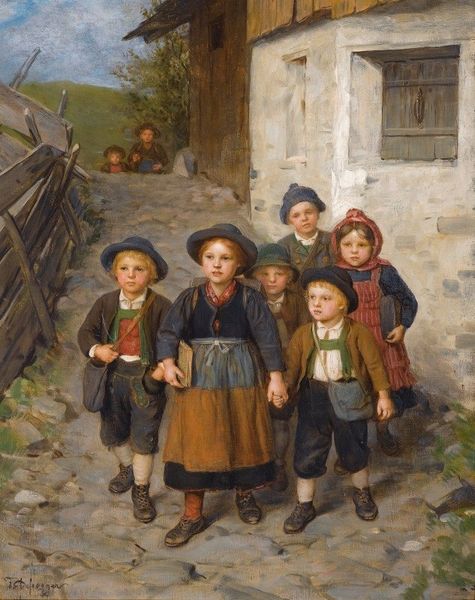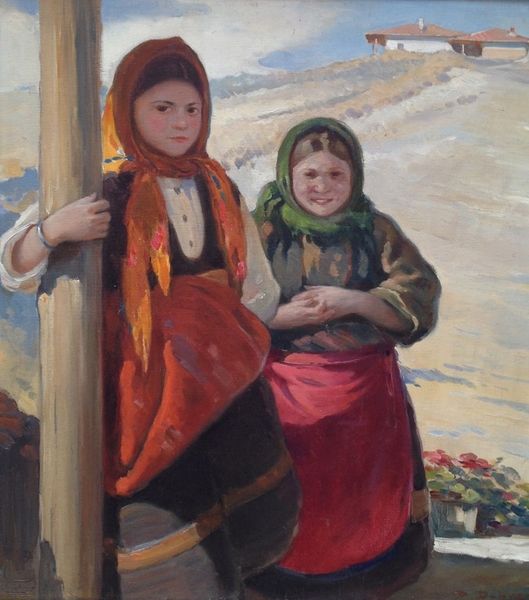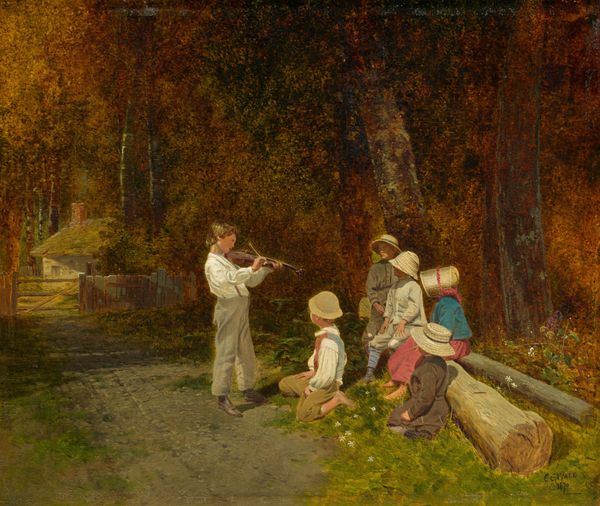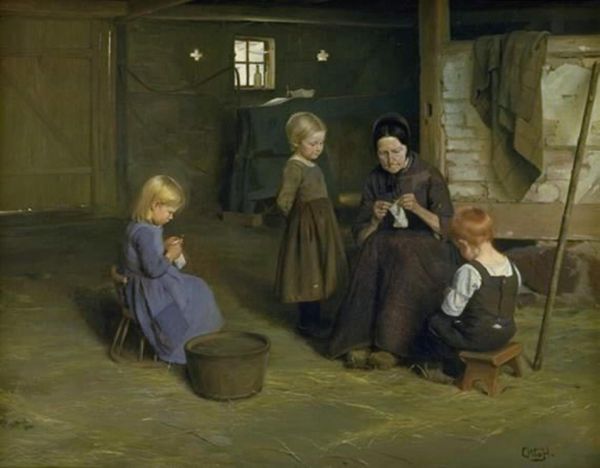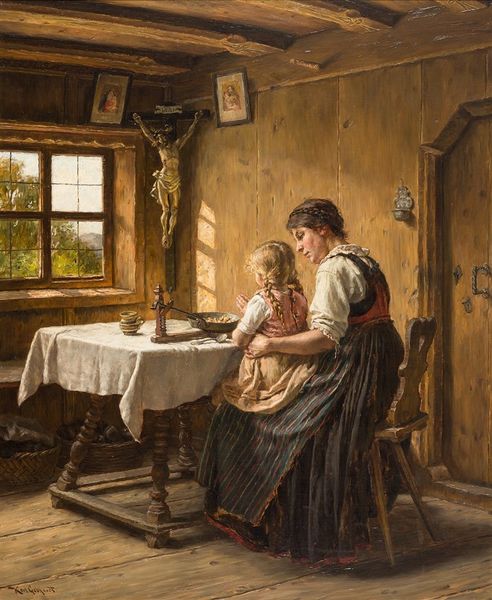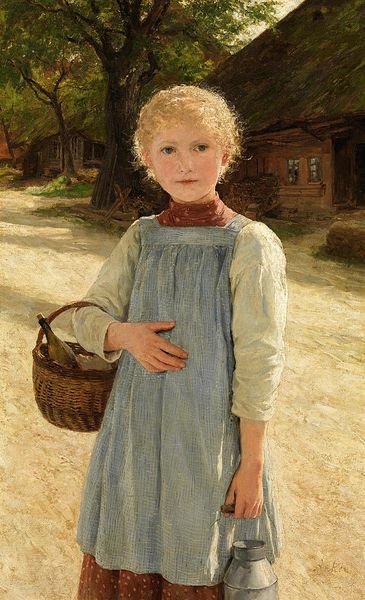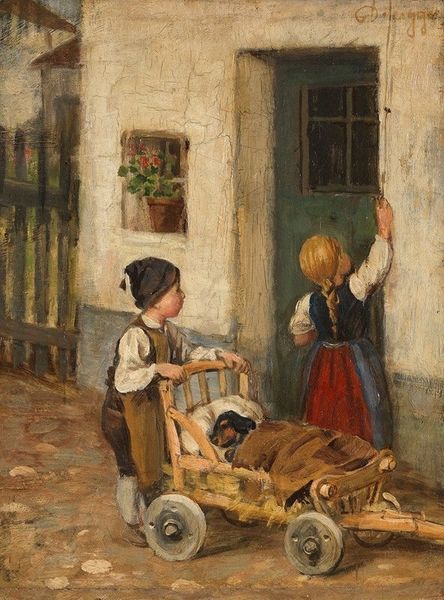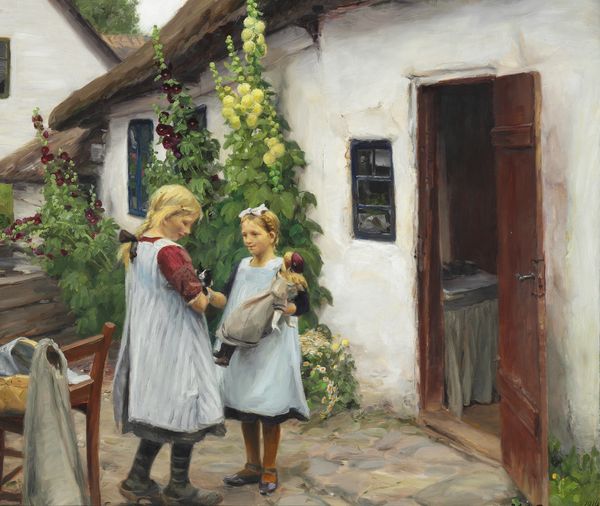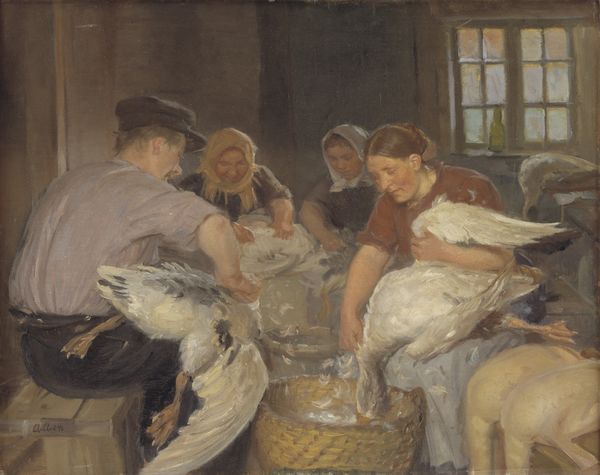
Dimensions: 135.2 cm (height) x 100.8 cm (width) (Netto)
Editor: This is Erik Werenskiold’s oil painting, "Children Waiting," created in 1893. The impasto technique really makes the landscape shimmer. What draws your eye to this piece? Curator: The fascinating thing is not just the depiction, but the production. The choice of oil, the application technique – thick impasto reflecting the plein-air approach. Consider the socio-economic factors here. What does this choice of material tell us about access, class, and the art market of the time? Werenskiold isn't just painting children; he's participating in a system of artistic production tied to resources and societal structures. Editor: So you're less interested in their emotional state and more in... the paint itself? Curator: It's both! But we need to remember, the artist chooses oil not just for aesthetic reasons. Where did he buy his supplies? Who ground the pigments? And how did the art market shape what was deemed ‘appropriate’ subject matter for such costly materials? What do the worn clothes of the children suggest? Editor: I see what you're saying. It brings a new dimension, thinking about the cost and labor involved. The kids' worn clothes really contrast the rich paint application, now that you point it out. Curator: Precisely! It prompts questions. Were these children paid to pose? If so, how much? By considering art as material, and artmaking as a job of labor, we uncover stories about the time. It is not just romantic and genre painting, but a picture of resources available to some in a given society. Editor: This has broadened my understanding. It's not just a sentimental depiction, but also an object born of material conditions and artistic labour. Thank you! Curator: My pleasure. Art history isn't just about beauty; it's also about labour and commodities.
Comments
No comments
Be the first to comment and join the conversation on the ultimate creative platform.
